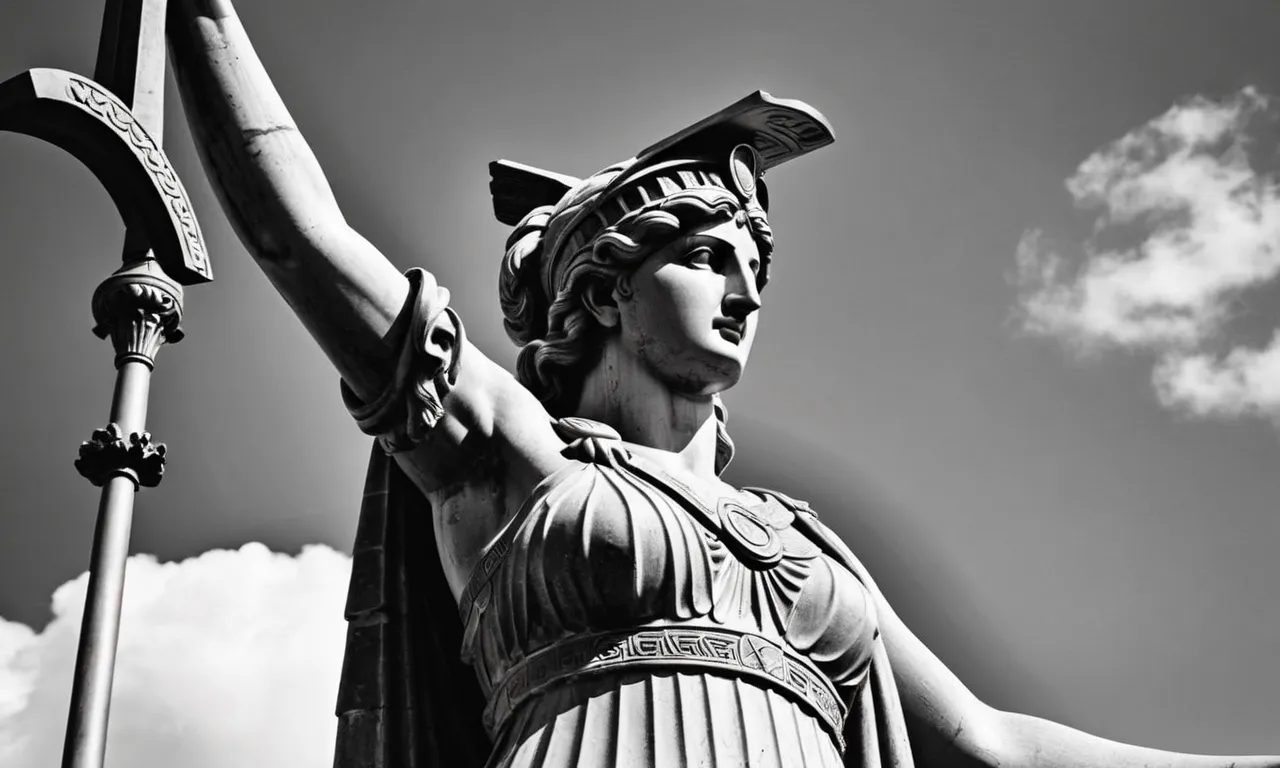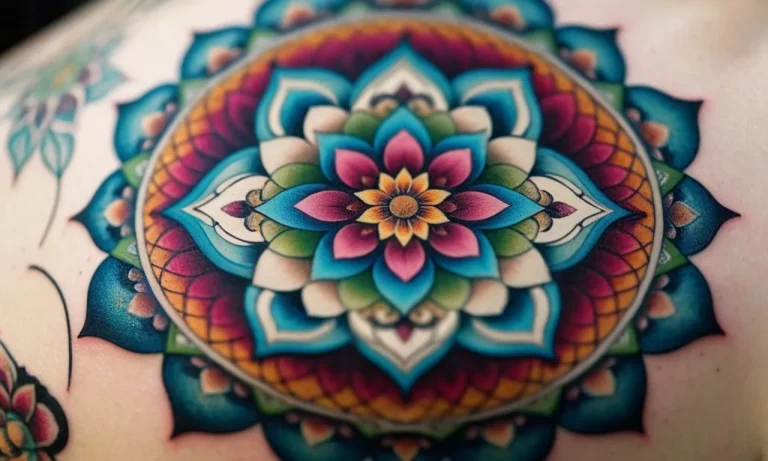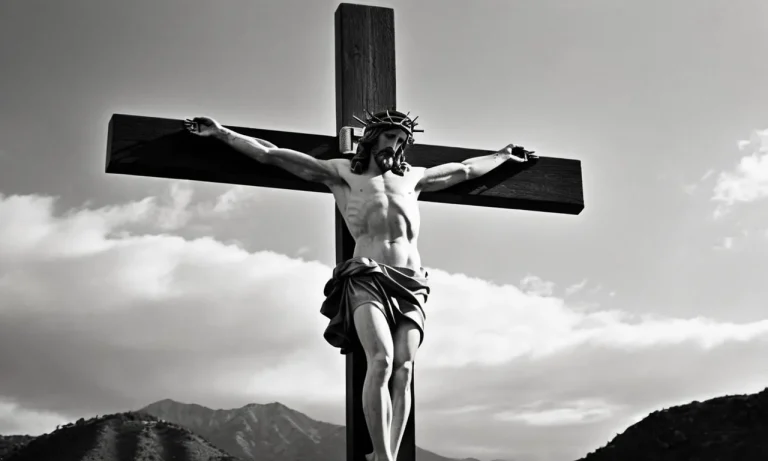What God Did Sparta Worship? A Deep Dive Into Ancient Greek Religion
If you’re wondering what gods the ancient Spartans worshipped, you’ve come to the right place. The religion of Sparta was complex and multifaceted, centered around worship of major Greek gods like Zeus and Apollo as well as local deities and heroes.
This article will provide a comprehensive overview of Spartan religion and mythology so you can fully understand the role spirituality played in this iconic ancient society.
Sparta occupied a unique place in the ancient Greek world, with a social system and culture centered around military strength and endurance. Religion likewise played a fundamental role, providing divine justification for the Spartan way of life.
Read on to learn all about the major gods, rituals, festivals, and beliefs that defined Spartan worship over the centuries.
The Pantheon of Spartan Gods
Zeus
As the king of the gods in Greek mythology, Zeus was unsurprisingly also the most important deity worshipped in ancient Sparta. Temples dedicated to Zeus dotted the Spartan landscape, the most notable being the Temple of Zeus on the acropolis of Sparta.
According to ancient sources, gigantic statues of Zeus existed in these temples, depicting the god seated on his throne while holding symbols of his power like the thunderbolt or eagle.
Festivals dedicated to Zeus also formed an integral part of Spartan religious life. For example, the Diasia festival celebrated Zeus as the god of hospitality. Athletic contests were held during the festival, and it was considered sacrilegious to harm messengers who arrived during this holy time.
Another major festival was the Hyacinthia, held each summer in honor of both Zeus and the Spartan hero Hyacinthus. For three days, Spartans made offerings to the gods and participated in athletic and musical contests.
Apollo
Apollo was another major Spartan deity, second only to Zeus in importance. As in other Greek city-states, Apollo was worshipped in Sparta as a god associated with prophecy, music, healing, and youth. Large bronze statues of Apollo existed in Sparta, including one said to stand over 30 feet tall!
The most important Spartan festival honoring Apollo was the Gymnopaedia. According to ancient historians, this 3-day festival featured choral performances, naked dancing and athletic competitions. Another major rite was the sacrifice of a bull to Apollo on the occasion of a new king’s ascent to the throne.
Apollo’s sanctuary at Amyclae just outside Sparta was also a prominent religious site, home to a famed statue of the god created by the legendary sculptor Bathycles.
Artemis
As Apollo’s twin sister, the goddess Artemis was also venerated by the Spartans. Like elsewhere in Greece, she was worshipped as a protector of wild animals and vegetation and patron of the hunt. She was also seen as a goddess associated with women, childbirth and young people.
While not as widely celebrated as her brother Apollo, Artemis had her own religious festivals in Sparta. For example, Spartan youths made offerings at Artemis’ altar to mark their passage into adulthood.
The sanctuary of Artemis Orthia just outside Sparta was also an important cult center, home to an ancient wooden cult statue of the goddess. Interestingly, later rituals at this temple involved prepubescent youths competing in a brutal contest of whipping endurance!
Athena
Athena was a major deity across all ancient Greek city-states, and Sparta was no exception. As goddess of wisdom and warfare, she was unsurprisingly very significant in martial Sparta. She was worshipped as a patron and protector of the Spartan state and army.
According to some ancient sources, Spartan kings would make sacrifices to Athena before embarking on major military campaigns.
The major cult site of Athena in Sparta was her temple on the Sparta acropolis, which contained a large statue of the goddess clad in armor. Other shrines to Athena could also be found throughout Sparta and its territories.
Interestingly, some scholars believe the festival of the Hyacinthia doubled as a celebration of both Athena and Apollo, making it one of the most important religious celebrations in Sparta.
Ares
As the Greek god of war, Ares naturally had an important place in the religion of militaristic Sparta. In the founding legend of Sparta, the demi-god hero Heracles assisted King Tyndareus in building a temple to Ares in thanks for helping him win his throne.
Ancient Sparta contained shrines and sanctuaries dedicated to Ares, emphasizing the central role of war in Spartan society.
Spartan soldiers would pray and make offerings to Ares before major battles, believing he would aid them in securing victory. However, Ares does not seem to have been as widely revered in Sparta as Athena when it came to war.
Athena represented strategy and state-sponsored warfare, while Ares embodied the more primal, violent aspects of war. Still, Ares’ importance should not be underestimated – without the bloody God of War on their side, Sparta may not have become one of ancient Greece’s greatest military powers.
Cults of Local Deities
Helen and the Dioscuri
Helen of Troy was worshipped in Sparta as a goddess representing beauty and desire. According to myth, she was the daughter of Zeus and the mortal Leda. Helen came to be revered for her role in initiating the Trojan War.
There are remains of a sanctuary dedicated to Helen and her brothers Castor and Pollux, known as the Dioscuri, outside Sparta’s acropolis. This indicates they were important deities to the Spartans.
The divine twins Castor and Pollux were patrons of sailors and were associated with horsemanship. Evidence suggests young Spartan men made offerings at their shrine before battle. The Dioscuri were seen as symbols of Sparta’s military strength.
Their descent to earth on alternate days may have inspired the Spartan dual kingship system. The cult of the Dioscuri highlights the importance Spartans placed on military success.
Menelaus
Menelaus was Helen’s husband and king of Sparta, according to Homeric myths. He led the Greek expedition to rescue Helen after she was abducted to Troy. Remnants of votive offerings found at the Menelaion shrine outside Sparta indicate he was worshipped as a hero.
His cult may have bolstered ideas of Spartan masculinity and justified expansionist warfare.
Interestingly, archaeological evidence suggests public worship of Menelaus declined in the 3rd century BCE as Sparta lost military dominance. This demonstrates how hero cults were shaped to serve political agendas in promoting Spartan supremacy.
The waning of his cult reflects Sparta’s fading power at the time.
Orestes
Orestes, son of the Mycenaean king Agamemnon, was the mythological ancestor of Spartan kings. He was exiled for matricide but later rehabilitated. Sparta contained sanctuaries dedicated to him which served as reminders of the city’s divine ancestry. His grave was also purportedly located in Sparta.
Orestes was associated with settling disputes and his cult may have upheld ideas of justice. The Spartan lyric poet Alcman composed songs about Orestes which were possibly sung at religious festivals. Reverence for Orestes rooted Sparta’s ruling dynasty in heroic mythology, binding the present with an exalted past.
Hero Cults of Sparta
Lycurgus
Lycurgus was regarded as the legendary lawgiver of Sparta who established the military-oriented reformation of Spartan society in accordance with the Oracle of Apollo at Delphi. He is credited with laying out the ascetic lifestyle and rigorous military training that Spartans adhered to for centuries.
According to ancient sources, Lycurgus received his reforms from the Oracle at Delphi and sought to establish a well-ordered society that emphasized duty, discipline and self-denial. The militaristic reforms he introduced created the social structure known as the “Lycurgan Reforms” that defined classical Spartan society.
Lycurgus instituted a council of elders, the Gerousia, to help rule Sparta. He also created the Ephors, magistrates that helped check the kings’ power. Other reforms included equal land distribution among citizens and a rigorous military education regime known as the Agoge that trained male Spartan citizens from the age of 7 until adulthood.
The rigid lifestyle and social order established by Lycurgus came to be almost mythical in ancient Greece. He was worshipped as a hero by the Spartans for centuries after his death. His remains were enshrined in Sparta and sacrifices were made in his memory.
Hero cult worship of law givers like Lycurgus was common practice in ancient Greek religious traditions.
Chilon
Chilon was one of the Seven Sages of Greece – early 6th century BC philosophers and statesmen famed for their wisdom and counsel. He served as ephor in Sparta around 556 BC.
According to ancient sources, Chilon was regarded as extremely wise and intelligent. He upheld traditional Spartan virtues like brevity of speech and self-restraint. Some famous sayings attributed to him include “Know thyself” and “Nothing in excess”.
Chilon was widely respected during his lifetime and after his death. The Spartans built a sanctuary, the Chilonidion, in his memory where he was worshipped as a cult hero. This followed the tendency in Sparta to deify and worship local wise men and lawgivers like Lycurgus.
As one of the Seven Sages, Chilon’s fame spread across Greece. After his death, it was written that “This man held the first place in Greece for wisdom” (Diogenes Laërtius). His hero cult status reflects how admired and influential these early philosophers were in shaping ancient Greek society.
Major Religious Rituals and Festivals
The Gymnopaedia
The Gymnopaedia was one of the most important religious festivals in ancient Sparta. It was held annually in honor of Apollo, the god of music and poetry. The festival lasted for several days and involved choral performances, athletic competitions, and ritual dances performed by young Spartan men and women.
The name Gymnopaedia comes from the Greek words gymnos meaning “naked” and paideia meaning “education”, referring to the fact that the dancers were nude. This was seen as a rite of passage into adulthood. The dances imitated the mythic battles of Sparta’s legendary founder, Heracles.
They were accompanied by songs and hymns, making this a vibrant display of music, poetry, and youthful vigor.
The Hyacinthia
Another major Spartan religious festival was the Hyacinthia, held each summer at the shrine of Hyacinthus near Amyclae. According to myth, Hyacinthus was a beautiful young Spartan prince loved by the god Apollo. He died when a jealous Apollo accidentally struck him with a discus.
From his spilled blood, the hyacinth flower sprang up. The festival lasted three days and honored both Apollo and Hyacinthus, involving sacrifices, competitive games, feasting, and choral dancing. On the final day, there was a solemn procession to Amyclae where offerings were made at the hero’s tomb.
The Hyacinthia celebrated Spartan mythic history while also marking the start of the new summer. It drew participants from all over Laconia in a show of Spartan dominance.
The Carneia
The Carneia was a major late summer Spartan festival held in honor of Apollo Carneus, a form of Apollo as god of flocks and herds. It lasted nine days and involved musical contests, dramatic performances, sacrifices, ritual feasts, and athletic competitions.
But the Carneia was more than just a religious celebration – it also served an important political function. During this festival, Spartans were forbidden from engaging in military campaigns. This gave them an opportunity to focus inwardly on their society and values.
The Carneia helped solidify community bonds while also showcasing Spartan military might in its athletic competitions. In times of war, the Carneia also allowed Spartan troops to return home to participate. In this way, religion and politics were closely intertwined in ancient Sparta.
Sacred Sites of Sparta
Temple of Athena Chalkioikos
The Temple of Athena Chalkioikos was one of the most important sacred sites in ancient Sparta. According to ancient writers, this temple dated back to at least the 8th century BCE and was dedicated to Athena in her epithet “of the bronze house.”
The temple got its name from the bronze plaques that adorned its walls and roof. It was located on Sparta’s acropolis next to the city’s famous Sanctuary of Artemis Orthia.
The Temple of Athena Chalkioikos was not just a religious site. It also served as a location for important political gatherings and decisions in Sparta. According to the ancient historian Thucydides, Sparta’s governing council of elders known as the Gerousia used to meet at this temple.
So it was a center of both spiritual and political authority in the city.
Unfortunately, there are no visible remains of the Temple of Athena Chalkioikos today. But ancient writers emphasize its importance, so we know it was one of the most sacred spots in Sparta for over 700 years.
Sanctuary of Artemis Orthia
The Sanctuary of Artemis Orthia was another incredibly important sacred site in Sparta. Dedicated to Artemis in her manifestation as Orthia (“the upright one”), this open-air sanctuary was located right next to the acropolis.
Archaeologists have been able to partially reconstruct the sanctuary, giving us insight into its rituals.
One notorious ritual at the Sanctuary of Artemis Orthia was the diamastigosis. This was a violent contest where Spartan youths would compete to withstand lashings from a priestess at the altar. The bravest, toughest youths could reportedly endure horrific bloody wounds without crying out.
This was seen as preparation for Spartan military prowess.
The remains at the Sanctuary of Artemis Orthia reveal over 600 clay masks offered to the goddess. Scholars debate whether these might have depicted participants in the brutal diamastigosis competition and other rituals. Without a doubt, this was one of Sparta’s most intense sacred locales.
Menelaion
The Menelaion was a shrine to Sparta’s mythic founders – the brothers Menelaus and Agamemnon. According to legend, after the Trojan War Menelaus returned home with his wife Helen to found the ruling dynasty of Sparta.
Archaeologists rediscovered the ruins of the Menelaion shrine in 1909 CE on a hillside near the village of Therapne overlooking Sparta.
Excavations revealed votive offerings to Menelaus and Helen from the 8th century BCE onwards. Highlights include an Egyptian alabaster sculpture of Menelaus and Helen locked in an embrace. This intimate work demonstrates their status as divine founder-heroes at the Menelaion shrine.
Other notable finds are bronze votive plaques with nude warriors. These probably depict young Spartan soldiers dedicating symbols of their valor to Menelaus and Agamemnon – the ultimate Spartan role models.
Like other sacred sites around Sparta, the Menelaion offers a window into the warlike values of this ancient Greek culture.
Conclusion
The gods of ancient Sparta played a vital role in all aspects of society, from the highest echelons of state power to the training fields where young Spartans hardened themselves for battle. By understanding the pantheon, rituals, and beliefs that defined Spartan worship, we gain key insights into what made their culture so unique among the city-states of ancient Greece.
From the divine ambitions of Zeus to the bloody sacrifices made to Artemis Orthia, religion shaped Spartan values of duty, courage, and unwavering devotion to the state. Even today, the vivid myths and gods of Sparta continue to fascinate students of antiquity who seek to understand how divinity and human society intersected in the ancient world.







